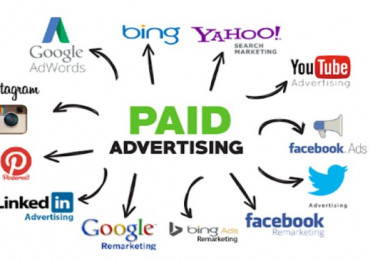
It is the use of video content to promote and market a product, service or brand. This type of marketing relies on producing attractive videos targeting a specific audience with the aim of improving brand awareness and increasing engagement and sales.
Characteristics of video marketing
1. Visual and attractive: It attracts more attention compared to texts or images.
2. Ability to explain and clarify: It allows marketers to explain products and services in clear ways.
3. Ease of dissemination: It can be easily shared across social media and various platforms.
4. Ability to customize: Specific audience categories can be targeted based on interests and geographic locations.
Benefits of video marketing
1. Increased engagement: Videos encourage sharing and interaction, which increases the reach of content.
2. Search engine optimization (SEO): Videos can improve a site's ranking in search engines.
3. Increased conversion rates: It helps convert viewers into customers by providing clear information.
4. Building trust and credibility: By displaying customer experiences or explaining products in visual ways.
Features of video marketing
1. Ease of access: Videos can be viewed on multiple devices such as mobile phones and computers.
2. Varying cost: Videos can be produced at low or high cost depending on the capabilities.
3. Measurement and analysis: Video performance can be monitored and its success can be determined through performance indicators.
Disadvantages of video marketing
1. High cost (sometimes): Some videos may require advanced equipment and specialized personnel.
2. Time and effort: Producing a high-quality video takes a lot of time and effort.
3. The need for continuous improvement: Videos must be updated periodically to remain relevant and up-to-date.
Steps to make a marketing video
1. Determine the goal: Determine what you want to achieve through the video, whether it is raising brand awareness or increasing sales.
2. Know the target audience: Understand who the target audience is, and what their needs and preferences are.
3. Choose the type of video: such as an explanatory video, a short advertisement, customer testimonials, or a product display.
4. Write the script: The script must be clear and direct and convey the main message effectively.
5. Filming and production: Use appropriate equipment and ensure the quality of the video in terms of image and sound.
6. Distribution and publishing: Choosing the right channels to publish the video, such as social media platforms or email.
7. Analysis and review: Monitoring the video’s performance through indicators such as the number of views, interactions, and comments.
Examples of modern Arab companies that use video marketing
1. Namshi: An online store that uses video to promote and display products in innovative ways.
2. Etisalat: A telecommunications company that uses video in its advertising campaigns to showcase its services.
3. Zain: An Arab telecommunications company that effectively uses video in its advertising campaigns across the region.
Video marketing is a powerful tool in the digital age that allows companies to engage with their audience directly and effectively. Despite the challenges related to cost and effort, the benefits such as increased engagement, improved search engine optimization, and increased conversion rates make video marketing an indispensable part of modern marketing strategies. With the right strategies, companies can achieve great success through video marketing.

18/08/2024

18/08/2024

01/09/2024

17/08/2024

30/08/2024

12/06/2024

20/08/2024

26/08/2024

30/08/2024

17/08/2024

20/08/2024

01/09/2024

17/08/2024

31/08/2024

20/08/2024

18/08/2024

28/08/2024

01/09/2024

20/08/2024

18/08/2024